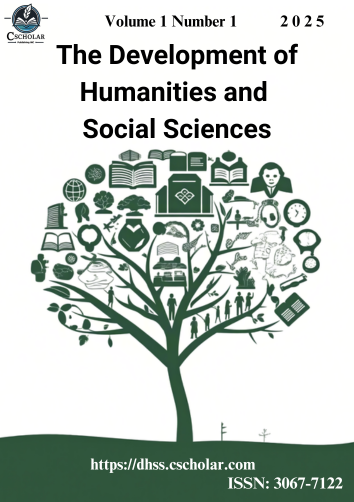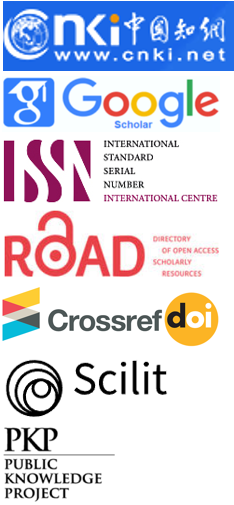Factory Pollutant Discharge Data Flow Prediction Based On LSTM-Transformer
DOI:
https://doi.org/10.71204/t8xden06Keywords:
LSTM, Transformer, Factory Sewage DischargeAbstract
Aiming at the problems of complex feature extraction and insufficient ability to capture time series dependencies in the prediction of factory pollutant discharge data, this study proposes a hybrid deep learning model that integrates a Long Short-Term Memory (LSTM) network with a Transformer. Multi-dimensional time series data on factory pollutant discharge (such as hourly flow rate, pH value, ammonia nitrogen concentration, etc.) are collected via Internet of Things (IoT) devices. After standardization, local temporal features are extracted using the LSTM network, while global dependency relationships are captured through the Transformer's multi-head self-attention mechanism. Experiments are conducted on a public dataset, using root mean square error (RMSE), mean absolute error (MAE), and the coefficient of determination (R²) as evaluation metrics to compare the traditional LSTM with the Transformer model. The results show that the LSTM–Transformer model achieves the best performance in predicting six types of pollutant discharge data (with RMSE reduced by 6.3%–12.1% and R² improved by 2.5%–5.2%), demonstrating its effectiveness in accurately capturing both long-term and short-term dependencies and providing robust support for real-time pollutant discharge early warning in smart factories.
References
Baosong, Y., Longyue, W., F. D. W., & others. (2021). Context-aware self-attention networks for natural language processing. Neurocomputing, 458, 157–169.
David, D., N. A. F., Jane, H., & others. (2016). CellProfiler Analyst: Interactive data exploration, analysis and classification of large biological image sets. Bioinformatics, 32(20), 3210–3212.
Gao, Y., Jiang, Y., Peng, Y., Yuan, F., Zhang, X., & Wang, J. (2025). Medical Image Segmentation: A Comprehensive Review of Deep Learning-Based Methods. Tomography, 11(5), 52.
Hui, L., Shigan, Y., & Linguo, L. (2018). Sewage particle concentration measurement based on image processing technology. Chemical Engineering Transactions, 71, 883–888.
Joseph, G., Moyez, D., Paulo, N., & others. (2014). Exploring high dimensional data with Butterfly: A novel classification algorithm based on discrete dynamical systems. Bioinformatics, 30(5), 712–718.
LiMin, Z., Yang, L., YueTing, Z., & others. (2023). A deep learning method using gender-specific features for emotion recognition. Sensors, 23(3), 1355.
Mahjouri, M., Ishak, B. M., Torabian, A., & others. (2017). The application of a hybrid model for identifying and ranking indicators for assessing the sustainability of wastewater treatment systems. Sustainable Production and Consumption, 10, 21–37.
Miao, H. (2018). Coal chemical wastewater treatment process based on computer simulation technology. Chemical Engineering Transactions, 67, 469–474.
Stefano, P., Giacomo, P., & Alessandro, P. (2021). LoPATraN: Low power asset tracking by means of Narrow Band IoT (NB-IoT) technology. Sensors, 21(11), 3772.
Yuan, F., Huang, X., Zheng, L., & Wang, Y. (2025). The evolution and optimization strategies of a PBFT consensus algorithm for consortium blockchains. Information, 16, 268.
Yuan, F., Zuo, Z., Jiang, Y., Shu, W., Tian, Z., Ye, C., Yang, J., Mao, Z., Huang, X., Gu, S., & Peng, Y. (2025). AI-Driven Optimization of Blockchain Scalability, Security, and Privacy Protection. Algorithms, 18(5), 263.
Ze-Jun, L., Jin-Quan, W., Yong-Wen, M., & others. (2019). Online prediction of effluent COD in the anaerobic wastewater treatment system based on PCA-LSSVM algorithm. Environmental Science and Pollution Research, 26(13), 12828–12841.
Downloads
Published
Issue
Section
Categories
License
Copyright (c) 2025 Hongyu Zhang, Fujiang Yuan (Author)

This work is licensed under a Creative Commons Attribution 4.0 International License.
All articles published in this journal are licensed under the Creative Commons Attribution 4.0 International License (CC BY 4.0). This license permits unrestricted use, distribution, and reproduction in any medium, provided the original author(s) and source are properly credited. Authors retain copyright of their work, and readers are free to copy, share, adapt, and build upon the material for any purpose, including commercial use, as long as appropriate attribution is given.





